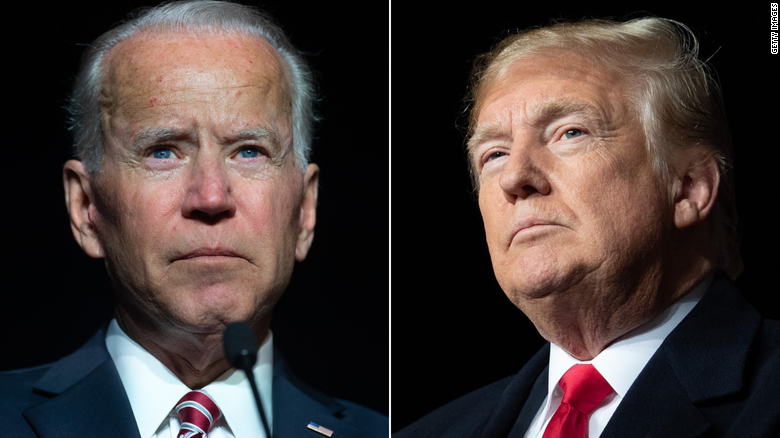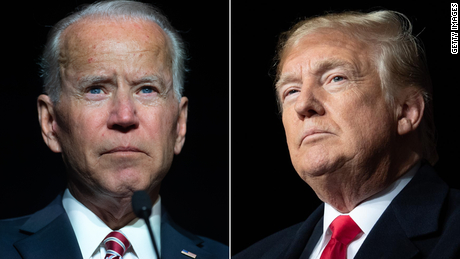(CNN)Former Vice President Joe Biden continues to hold an advantage over President Donald Trump in the polls. Given that we're past both major party conventions and closing in on Labor Day, the only fair conclusion to reach is that Biden's the favorite.
Yet, it continues to be clear that the national polling will continue to overstate Biden's edge. An examination of the state polls shows a race that, while not a tossup by any means, is closer than the national polls would indicate.
The national polls after the convention tell a pretty clear story. Biden is up by around 8 points. That's what the CNN/SSRS poll shows. That's what the Grinnell College/Selzer and Co. poll has. The average, depending on how you compute it, has basically the same thing.
As I noted last week, elected incumbents rarely gain ground after the conventions. The two biggest gainers in the modern era were Dwight Eisenhower in 1956 and George H.W. Bush in 1992. Both picked up about 4 points, which would only cut Biden's edge by about half.
Biden's true lead (or true margin), however, is closer to 5 points. What do I mean by that?
Remember, the only thing that ultimately matters is winning 270 electoral votes in the Electoral College. To understand how easy a path each candidate has, you have to look at the state level polling.
The polling there is not nearly as universally good for Biden. Yes, some of it was good for Biden. He was up 8 points in a Fox News poll of Wisconsin. But a Quinnipiac University poll in Florida had the spread between Biden and Trump at just 3 points.
Indeed, if you were to look at all the swing state polling and average it, Biden's up by around 6 to 7 points in Michigan and Wisconsin. His advantage in Arizona is closer to 5 points. That gets Biden to 270 electoral votes exactly, assuming he holds all the states Hillary Clinton won in 2016 and also picks up the well-educated 2nd Congressional District in Nebraska. (Nebraska, like Maine, gives an electoral vote to the winner in each of its congressional districts.)
In other words, the true margin (or the margin in the state that puts Biden over the top in the Electoral College) is 5 points.
This matches what we saw in the CNN/SSRS poll that had Biden up by 8 points nationally and with a 5-point difference in the aggregate of the 15 closest states in 2016. That 3-point gap is what our poll also had last month.
This 3-point spread between popular vote margin and the true margin pretty much exactly what we saw in 2016. Clinton won by 2 points nationally, while Trump took Wisconsin by 1 point and with it the electoral college.
Now, we obviously don't know what the exact difference between the popular vote and the true margin will be in 2020. But a difference almost always exists, and it's quite likely that this cycle it will favor Trump.
My study of elections over the past 160 years shows that there has been about a 2-point difference on average between the popular vote margin and true margin. The gap tends to be larger when one party has its votes concentrated in a certain area. During the post-Civil War area, that was in the South for Democrats. Today, it tends to be in the urban areas for the Democrats.
One of the better ways to think about the split between the true margin and popular vote margin was put forth by FiveThirtyEight's Nate Silver. Biden is generally favored to win the Electoral College if his popular vote margin is greater than 3 points and is generally the underdog when it is less. Either candidate, however, would have at least a 10% chance of winning if the popular vote margin is between 1 and 5 points.
History indicates, as does the current math, that Biden's lead should only be considered pretty safe if he wins the popular vote by at least 5 points. Right now, the polls indicate that he will.
It wouldn't take much, though, to shift the race so that Biden's national lead is less than 5 points, which would mean the true margin would be in the competitive territory.

















